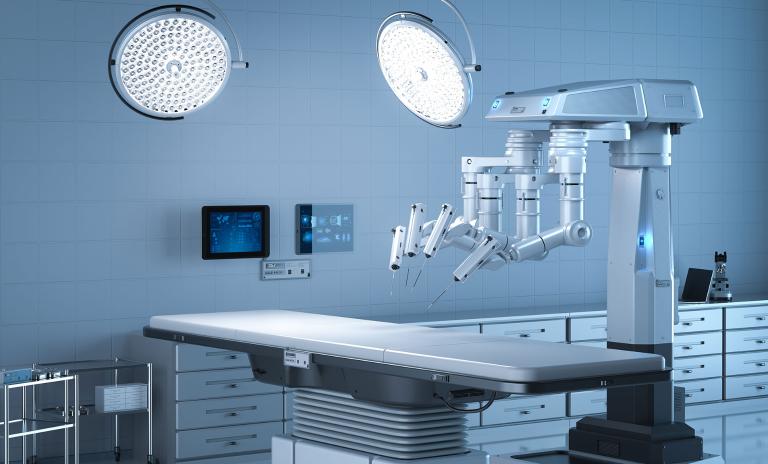Roland Berger's study "Future of health 4" examines tomorrow's patients – their attitudes to innovation, trust in healthcare participants and willingness to pay.


Robotics in surgery
Lights, camera, scalpel – robots enter the operating theater
Robotic-assisted surgery (RAS) is revolutionizing the operating theatre. An increasing number of surgeons regularly use partially automated systems when performing high-precision procedures. With RAS accounting for less than 1% of the 300 m operations carried out worldwide each year, Roland Berger’s new RAS study forecasts that industry revenues will triple by 2030.

This is because an increasing number of surgeons and other healthcare professionals recognize the benefits of robots in their operating theaters: RAS can achieve higher quality-results in less time than conventional surgery, reduce the risk of complications and the length of hospital stays for patients, and lower the physical strain on all hospital staff involved.
General surgery, urology and gynecology accounted for more than three quarters of the market in 2022, with a growing number of RAS systems suppliers vying for market share. Many companies offer multi-arm platforms that allow surgeons to perform different procedures in these and other fields by equipping each arm with the requisite tools and imaging systems.
"The opportunities of the RAS market have attracted a growing number of players, which leads to more competitive pricing and encourages further innovation."
The RAS sector can be broken down into three major segments: robotic systems, instruments and accessories, and services. Systems are one-time investments priced anywhere between USD 500,000 and USD 3 m and account for one third of industry revenues; many instruments and accessories are often used only once and account for 53% of sales.
This allows RAS companies to operate a lucrative “razor-and-razorblade” business model of periodic deals involving big-ticket items and recurring sales of consumables. Although it is the smallest segment, services also promises rising recurring revenues as RAS providers offer more AI-based services as part of software-as-a-service (SAAS) business models.
The opportunities of the RAS market have attracted a growing number of players. This is making pricing more competitive and spurring further innovation – which in turn should raise demand as more hospitals adopt RAS. The market is developing appreciably and is primed for further growth as a stream of new systems receive the necessary regulatory approval.
More competition means operational efficiency will become an ever more important issue alongside economic vagaries and supply-chain issues. At the same time, the shift from making products to offering broader solutions implies RAS companies will increasingly also have to excel in the pre-operative, intra-operative, post-operative phases of traditional surgery.
All RAS systems manufacturers will also have to overcome significant hurdles that have slowed the advance of robots into operating theaters. A significant number of healthcare professionals remain equivocal about the technology given relatively high investment and operating costs compared with laparoscopic and traditional “open” surgery. Healthcare systems around the world do not always see these higher costs providing a clear benefit.
Our study recommends five steps RAS companies can take to counter these perceptions and benefit from market growth. They have to become more customer centric and put surgeons and nurses at the heart of product development. And they have to generate convincing trial and real-world data with which they can help hospitals advance the quality of their operations.
Thirdly, RAS systems manufacturers must hone their value proposition to hospitals – and, by extension, to insurers and regulators. To help with this, they should, fourthly, win over leading universities and research hospitals. Lastly, they must communicate that RAS reduces human error in surgery and improves hospital efficiency by increasing patient throughput.
We thank Randy Brückner for his valuable contribution to our study.
Register now to download the full PDF including key insights, new developments as well as future challenges and new opportunities for the pharma industry.













